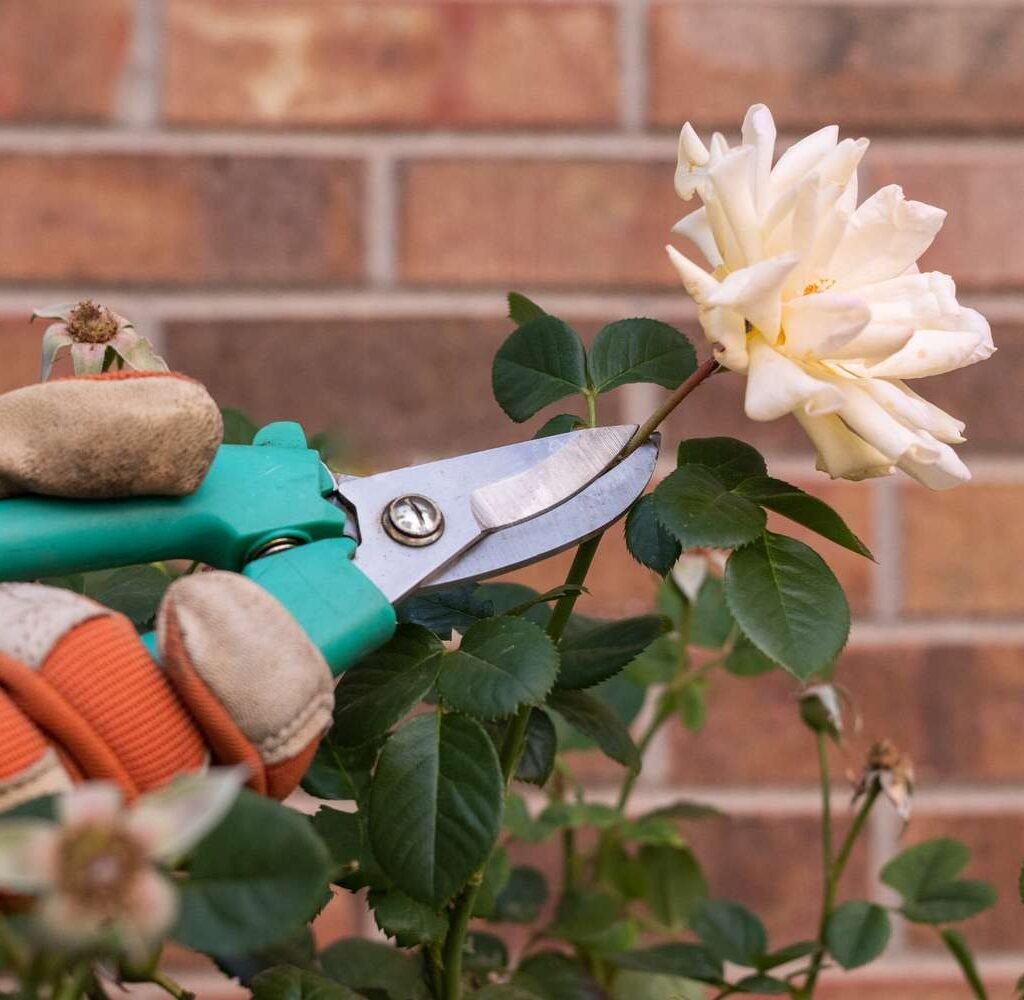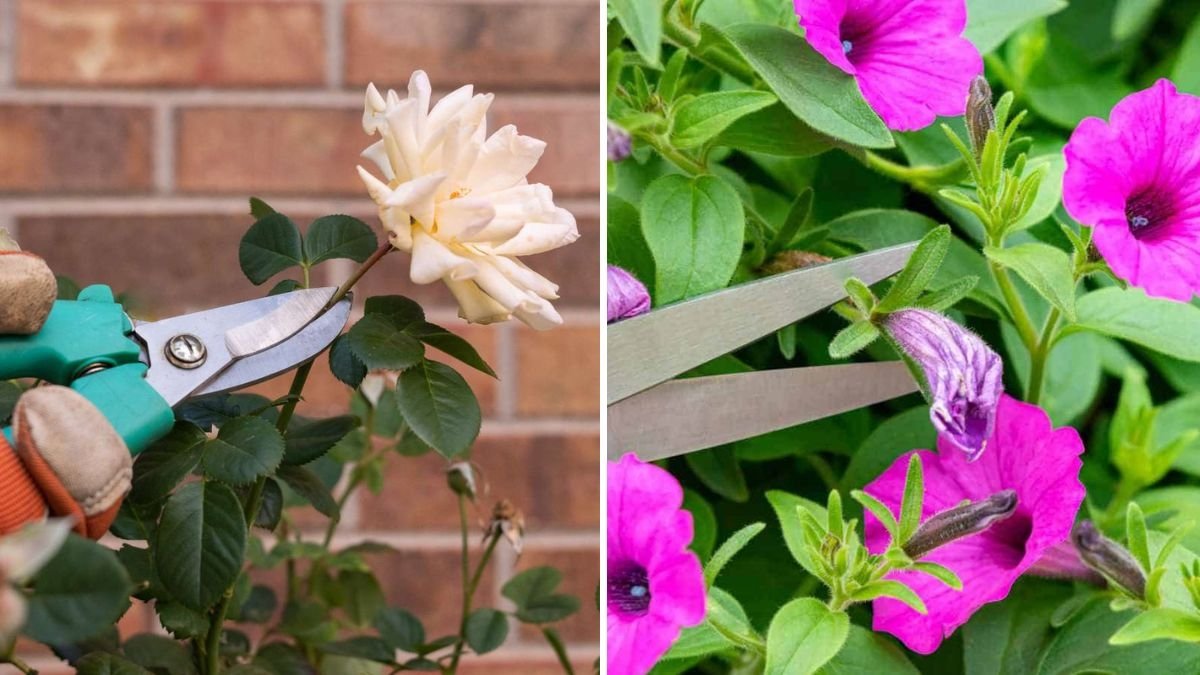One of the most effective yet often overlooked gardening practices is deadheading—the removal of spent or faded flowers from plants. Deadheading is essential for maintaining garden aesthetics, promoting healthier growth, and encouraging repeated blooming throughout the season. By removing old flowers, gardeners redirect the plant’s energy from seed production to flower and foliage development, resulting in a more vibrant and productive garden. This article provides a detailed guide on why, when, and how to deadhead flowers, along with tips for maximizing blooms in flower beds, containers, and borders.
1. Understanding the Purpose of Deadheading

Deadheading serves several important functions in garden care:
a. Encourages Continuous Flowering
- Plants naturally divert energy to seed production after blooming.
- Removing spent blooms prevents seed formation, allowing the plant to focus on producing new flowers.
- This process prolongs the flowering season for both annuals and perennials.
b. Improves Plant Health
- Faded flowers can attract pests and diseases if left on the plant.
- Deadheading reduces fungal infections like powdery mildew or botrytis by improving air circulation around flowers.
c. Enhances Garden Aesthetics
- Removing wilted or discolored flowers keeps the garden looking fresh, vibrant, and well-maintained.
Understanding these benefits demonstrates that deadheading is both a practical and aesthetic gardening practice.
2. Identifying Which Flowers to Deadhead

Not all flowers require deadheading, but many benefit from this practice:
a. Annual Flowers
- Annuals, such as petunias, marigolds, zinnias, and snapdragons, stop blooming after flowers fade if spent blooms are not removed.
- Deadheading encourages continuous production of vibrant flowers.
b. Perennial Flowers
- Perennials like coneflowers, roses, and daisies benefit from deadheading to promote a second bloom.
- Some perennials, such as lavender or ornamental grasses, may not require deadheading but benefit aesthetically when old flowers are removed.
c. Flowering Shrubs
- Shrubs like hydrangeas and hibiscus benefit from selective deadheading to stimulate new blooms while maintaining shape.
By identifying which plants require deadheading, gardeners can maximize bloom longevity and beauty.
3. Tools for Deadheading Flowers

Using the right tools makes deadheading efficient, precise, and safe for plants:
- Hand Pruners or Secateurs: Ideal for thick stems or woody plants like roses and hydrangeas.
- Pinching with Fingers: Effective for tender-stemmed annuals like petunias and impatiens.
- Scissors or Garden Shears: Useful for container plants and low-growing perennials.
- Gloves: Protect hands from thorns or prickly stems.
Proper tools minimize damage to plant tissue, preventing infection and ensuring optimal growth.
4. Step-by-Step Deadheading Techniques

Different plants require different deadheading methods:
a. Pinching
- Suitable for soft-stemmed annuals.
- Use fingers to pinch off the faded flower just above the first set of healthy leaves or lateral buds.
- Pinching encourages new lateral growth and more blooms.
b. Cutting with Scissors or Pruners
- Ideal for taller flowers like snapdragons, coneflowers, and roses.
- Cut faded flowers just above a leaf node or side shoot, ensuring the plant can produce new stems.
- For roses, remove flowers at an angle to prevent water from settling on cut stems, reducing disease risk.
c. Removing Seed Heads
- Some perennials like coneflowers and daisies can be deadheaded by removing old seed heads.
- This not only improves appearance but also encourages additional flowering.
By following these techniques, gardeners can stimulate continuous flowering while maintaining plant health.
5. Timing Deadheading for Maximum Blooms

Proper timing ensures plants respond with new flowers:
- During Blooming Season: Deadhead flowers regularly as soon as they start to fade.
- Morning or Afternoon: Deadhead during cooler parts of the day to minimize plant stress.
- Consistent Maintenance: Weekly deadheading prevents buildup of old flowers, keeping the garden vibrant.
Timing is critical because delayed deadheading may allow plants to divert energy to seed production, reducing bloom frequency.
6. Deadheading Specific Popular Garden Flowers
Different plants have unique deadheading requirements:
a. Petunias
- Pinch or cut faded flowers at the base of the flower stem.
- Regular removal encourages continuous blooming.
b. Roses
- Cut back to the first outward-facing leaf with five leaflets.
- Remove diseased or yellow leaves along with the flower to maintain plant health.
c. Snapdragons
- Snip faded blooms along the flower spike to encourage secondary flowering.
d. Marigolds
- Remove spent flowers at the base of the stem to stimulate new blooms.
e. Perennials (Coneflowers, Daisies)
- Deadhead by removing old flowers, leaving some foliage intact.
- This promotes a second round of blooms later in the season.
By tailoring deadheading practices to specific flowers, gardeners ensure maximum bloom production and prolonged beauty.
7. The Impact of Deadheading on Plant Growth
Deadheading does more than just remove faded flowers:
- Redirects Energy: Plants channel energy into producing new blooms and stronger stems.
- Encourages Lateral Growth: Many plants develop additional flower shoots when old flowers are removed.
- Reduces Disease Risk: Faded blooms are often entry points for pathogens; removing them reduces infection rates.
In essence, deadheading enhances both quantity and quality of blooms.
8. Combining Deadheading with Fertilization
Deadheading is most effective when combined with proper nutrition:
- Apply a balanced fertilizer after deadheading to provide nutrients for new growth.
- For flowering plants, use phosphorus-rich fertilizers to promote flower development.
- Organic options like compost tea or fish emulsion also encourage lush, colorful blooms.
Nutrient supplementation after deadheading ensures plants respond vigorously with additional flowers.
9. Seasonal Considerations in Deadheading
Deadheading practices may vary with seasons:
- Spring: Focus on promoting the first blooms and maintaining plant shape.
- Summer: Deadhead regularly to sustain continuous flowering during peak heat.
- Fall: Some perennials can be deadheaded to extend flowering until frost.
- Winter: Indoor flowering plants like geraniums or African violets may still benefit from selective deadheading to maintain aesthetics.
Adapting deadheading to seasonal conditions helps maximize flowering potential throughout the year.
10. Common Mistakes to Avoid When Deadheading
Avoid these errors to ensure effective deadheading:
- Removing Too Much Foliage: Only remove faded flowers; leaves are essential for photosynthesis.
- Ignoring Seed Heads: Allowing seed formation reduces energy for new blooms.
- Using Dirty Tools: Can transmit diseases; always clean pruners or scissors.
- Waiting Too Long: Plants may start diverting energy to seed production, reducing flower frequency.
Awareness of these mistakes ensures safe, productive deadheading practices.
11. Additional Tips for Maximum Flower Productivity
- Combine deadheading with watering and mulching to maintain healthy plants.
- Observe plant growth patterns to identify ideal cutting points for maximum blooms.
- Encourage pollinator activity to complement deadheading and enhance flower quality.
- Keep a deadheading schedule for larger gardens to ensure consistent maintenance.
By integrating deadheading into a comprehensive plant care routine, gardeners achieve a vibrant, long-lasting garden display.
12. Conclusion
Deadheading is a simple yet powerful gardening practice that promotes continuous flowering, improves plant health, and maintains garden aesthetics. By understanding which plants require deadheading, using the right tools, and employing proper techniques, gardeners can maximize blooms and extend the flowering season.
Key Takeaways:
- Regularly remove faded flowers to redirect plant energy toward new blooms.
- Tailor deadheading techniques to specific plant types, such as pinching, cutting, or removing seed heads.
- Combine deadheading with fertilization to stimulate vigorous flower production.
- Time deadheading properly and maintain a consistent schedule to sustain continuous blooming.
- Monitor plant health and avoid common mistakes for optimal results.
By practicing careful and timely deadheading, gardeners can enjoy vibrant, long-lasting, and abundant blooms throughout the growing season. Deadheading not only beautifies the garden but also enhances the vitality and productivity of flowering plants, making it an essential skill for gardeners of all experience levels.

Leave A Comment